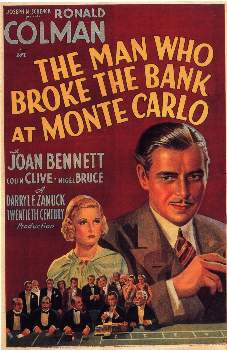
Notwithstanding that I said I wouldn’t say much about the Warman v. Fournier appeal
case, another point needs to be made in order to alert interested
parties to the possible need to intervene.
The National Post is arguing that it
is entitled to enforce copyright in the title (headline)
of a newspaper article entitled: "Jonathan
Kay on Richard Warman and Canada's Phony-Racism Industry"
62. Moreover, the
headline of the article was also a substantial part of the work. The application
judge erred by failing to consider the effect of reproducing the headline of
the article even though the Copyright Act defines a "work" as
including the title of that work "when such title is original and distinctive."
63. The headline of
the article was both original and distinctive. In Canada, the threshold for
originality in a work is "rather low." In order for a work (or the
title of a work) to be "original", all that is required is an
exercise of skill and judgment by the author, which involves intellectual
effort. Such exercise must not be so trivial that it could be characterized as
a purely mechanical exercise. However, the statutory requirement of originality
does not imply inventive originality. It is enough that the work is the
production of something in a new form as a result of the skill, labour and
judgment of the author.
64. Something that is
"distinctive" is "serving to differentiate or distinguish;
peculiar to one person or thing as distinct from others, characteristic; having
well-marked properties; easily recognized." Something that is
"distinct" is "distinguished as not being the same; not
identical; separate; different in nature or quality."49 The title of the
Kay Work possesses these qualities, distinguishing the Kay Work from other
newspaper articles, and in so doing is distinctive.
65. The headline,
"Jonathan Kay on Richard Warman and Canada's Phony-Racism Industry",
clearly demonstrates creativity, originality and distinctiveness, including the
distinctive and original concept of a "phony-racism industry."
(footnotes omitted)
This position, if adopted by
the Federal Court of Appeal, would have startling and potentially absurd consequences.
The automated extraction of titles (i.e. headlines) is the very basis not only of Google News
and other news aggregators but of Google, Bing and other search engines. Every
scholarly article is full of cited titles.
Not to mention Twitter, in
which a very large percentage of tweets are nothing more than automated
quotations of newspaper article headlines, blog titles, etc. with a shortened link. e.g.
Warman v Fournier: Copyright in Titles and Headlines of Newspaper Articles? bit.ly/XMt7a8
— Howard Knopf (@howardknopf) March 14, 2013
The assertion also flies in
the face of one of the most famous of old chestnut copyright cases from the
Privy Council. In 1939, the Privy Council ruled in a landmark case involving
the then famous song “The Man Who Broke the Bank at Monte Carlo” and the eponymous
movie that:
“As a rule, a title
does not involve literary composition, and is not sufficiently substantial to
justify a claim to protection. The statement does not mean that in particular
cases a title may not be on so extensive a sale and so important a character as
to be a proper subject of protection against being copied”.
But not in that case, and that was a very memorable and reasonably lengthy title as far as titles go. See Francis, Day & Hunter v. Twentieth Century Fox
[1939] 4 All E.R. 192 at 197. This authority is not mentioned in the National
Post’s memorandum.
In other words, it will be
very, very rare that a title is sufficiently substantial and original to
warrant copyright protection. Frankly, IMHO, this particular instance does not
leap to the forefront of such cases.
However, someone needs to make
points such as this to the Fedeal Court of
Appeal. Otherwise, such common
place applications as Google News, Twitter, and such common practices as citing
articles by names may be imperilled.
The Fourniers, who are representing themselves, have done well
to date but they are not expert litigators or copyright lawyers.
Interveners,
start your engines.
HPK
Well, it used to be that headlines and sub-heads were written by a different group within the newspaper. So the story would be written by the reporter(s) with a "slug" but the actual headline (wording, type size, etc.) was composed by a sub-editor (along with some editing to get the piece to fit in the space available).
ReplyDeleteSo it may be that the headline could be considered as a complete creative endeavor. Even though it was a brief statement.
Not sure about that? Well, Hemmingway is reputed to have once written a 6-word story: "For sale: baby shoes, never worn". Assuming he had, would that be eligible for copyright in spite of its brevity?